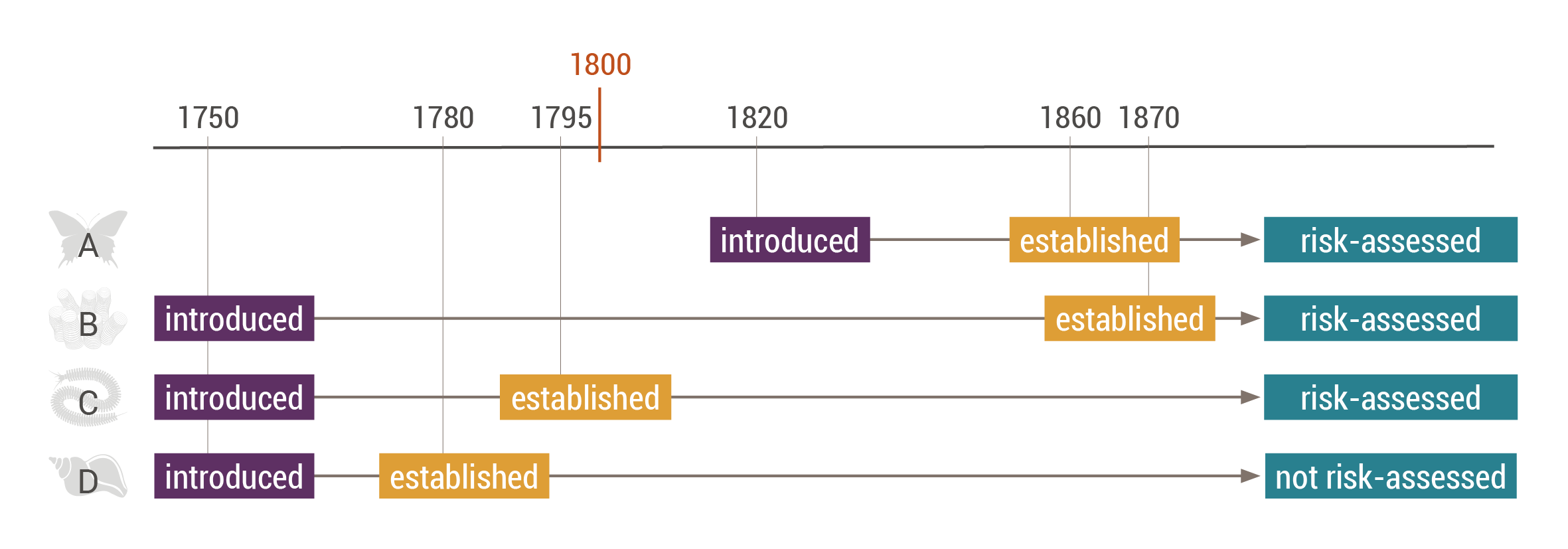Introduced to Norway before or after 1800?
Alien species that became established in Norway, after 1800, are to be risk-assessed. This also applies to species introduced before 1800 but which for different reasons did not become established until after 1800. Established species are those which can produce viable offspring, outdoors, without human intervention.
The year 1800 – the historical cut-off point
The historical delimitation is set at 1800 because knowledge about Norwegian biodiversity, prior to the year 1800, is incomplete. In subsequent years the knowledge base improved due to an increasing interest in the natural sciences. The 1800 delimitation corresponds to that which is used for the Red List.
The consequence of the delimitation is that certain species, which we know are alien, are not risk-assessed. Such species were established as stably reproducing in Norway by 1800 and are considered in this context to be native in Norway. To be established as stably reproducing means that the species must reproduce without human intervention for more than 10 years (see figure).
A few species, with established populations in Norway prior to 1800, are risk-assessed and considered to be alien species in the context of this list. An example is the wild boar Sus scrofa. Wild boar existed in southern Norway around the year 1000 but was reintroduced after 1800 via animals reintroduced into Sweden (secondary introduction).
In-depth investigations are often necessary
Some species, like sneezewort Achillea ptarmica, were solidly established long before the 1800 historical cut-off point and are therefore not risk-assessed. Nonetheless, sometimes a more in-depth investigation is required. Silver fir Abies alba and European larch Larix decidua were both risk-assessed in 2012 but in 2018 neither of the species were assessed. In the assessment of silver fir Abies alba is the following comment: "The first known planting of silver fir [Abies alba] took place at…Meheia in Kongsberg municipality in Buskerud county in 1745. Silver fir regenerated in the wild, described several times in the context of forestry (Myhrwold 1928, Robak 1950, Opsahl 1948, Børset 1960, Opsahl 1967). Investigations undertaken in 1912 uncovered two living silver fir Abies alba from the oldest plantings (Myhrwold 1928), and in 1948, with the use of a increment borer, an age was identified which corresponded with the time of planting in 1745. A great deal of regrowth of silver fir was also discovered, some of which was moved to the arboretum at the forestry museum in Elverum (Robak 1950). Silver fir in the open canopy can, from 30 years of age, set cones with seeds that can germinate (Nedkvitne 1966), and it is therefore more than likely that silver fir has been stably reproducing in Norwegian nature prior to 1800" (quote from criteria documentation for silver fir Abies alba).
